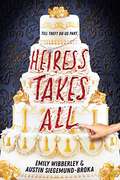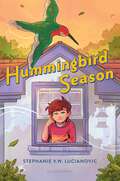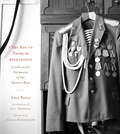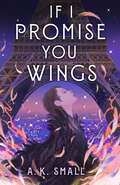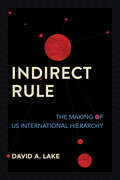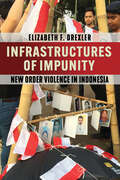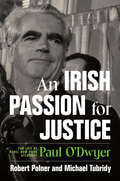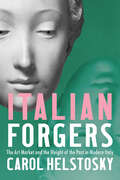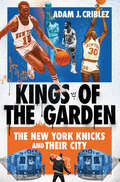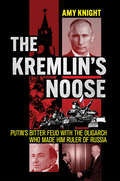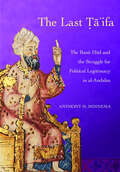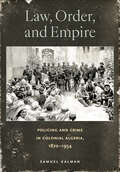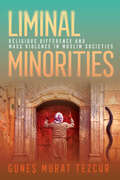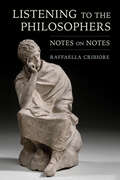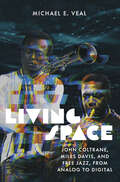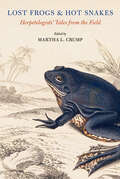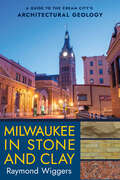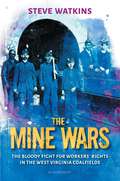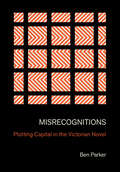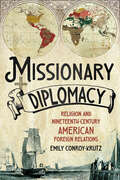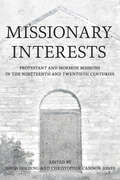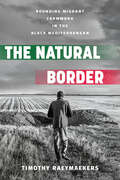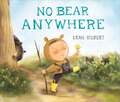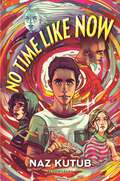- Table View
- List View
Heiress Takes All (Heiress Takes All #1)
by Emily Wibberley Austin Siegemund-BrokaThe Inheritance Games meets Ocean's 11 in this thrilling adventure about a teenager determined to pull off the perfect heist in the middle of her father&’s wedding. Seventeen-year-old Olivia Owens isn't thrilled that her dad's getting remarried...again. She's especially not thrilled that he cheated on her mom, kicked them out of their Rhode Island home, and cut Olivia out of her rightful inheritance. But this former heiress has a plan for revenge. While hundreds of guests gather on the grounds of the gorgeous estate where she grew up, everyone will be thinking romance—not robbery. She&’ll play the part of dutiful daughter, but in reality she&’ll be redistributing millions from her father&’s online accounts. She only needs the handwritten pass code he keeps in the estate's safe. With the help of an eclectic crew of high school students and one former teacher, Olivia has plotted her mid-nuptial heist down to the second. But she didn't plan for an obnoxiously nosy wedding guest, an interfering ex-boyfriend intent on winning her back, greedy European cousins with their own agenda, or a vengeful second wife. When everything seems like it's going wrong, Olivia has to keep her eyes on what really matters: getting rich. And when she&’s done, &“something borrowed&” will be the understatement of the year.
Hummingbird Season
by Stephanie V.W. LucianovicA poignant and necessary story about finding hope during difficult times, set in the early days of the Covid-19 pandemic.Archie's life--and the whole world--is turned upside down by Covid-19. Suddenly there are no more Friday night dinners out, no more going to school, no more hanging out with friends . . . no leaving the house at all. Even though he's inside with his family all day every day, Archie can't help but feel more alone than ever before. While everyone else seems to be adapting to their new normal just fine, it's like Archie is permanently on mute, unable to find the words to describe how he feels--and sometimes, unable to find someone who will listen. The bright spot of Archie's days at home is watching and learning about the hummingbirds that feed outside his windows. But just when it seems like this could be what brings his family together again, California experiences its worst wildfire in history, and Archie's favorite hummingbird disappears. In a time when hope is hard to hold on to, Archie must find his voice and find hope once again.Hummingbird Season is an honest and healing novel in verse documenting the early days of the Covid-19 pandemic and the things that bring us together when circumstances keep us apart.
I Try Not to Think of Afghanistan: Lithuanian Veterans of the Soviet War (NIU Series in Slavic, East European, and Eurasian Studies)
by Anna ReichI Try Not to Think of Afghanistan includes photographs and commentaries from Lithuanian veterans of the Soviet War in Afghanistan (1979–89), addressing the lasting realities of war and its effects on those conscripted to fight. Unflinching first-person accounts give details of training, combat, and the often difficult return to society for military conscripts within the Soviet system. Anna Reich gives insight into the experiences of not only the Lithuanian veterans from the Soviet War in Afghanistan but also veterans from all countries who face similar struggles and challenges.For three months, Reich interacted with twenty-two veterans in their homes and meeting halls and throughout their daily routines to produce portraits that provide intimate and unvarnished portrayals of their lives and the lasting effects of forced military service in the Soviet army. Often ostracized socially because of their involvement with the Soviet army, the veterans frequently feel invisible: there are no social programs to assist them in their attempts to address post-traumatic stress disorder and assimilate into society, their cause is largely unknown, and the government responsible for their conscriptions no longer exists.I Try Not to Think of Afghanistan is the culmination of eight years of investigation into the psychological toll of war and trauma. In providing a rarely seen perspective of life after combat, the book intersects with contemporary discourse, specifically the way the US experience in Afghanistan closely mirrors that of the Soviets and the Russian Federation's forced conscription of young men to fight in Ukraine.
If I Promise You Wings
by A.K. SmallHold Still meets You've Reached Sam in this lyrical novel about one young woman's journey through the Paris fashion scene as she chases promises, overcomes grief, and falls in love. Alix Leclaire has a plan: graduate high school and land her dream job as a feather artist at Mille et une Plume, where her creations will help define high fashion. Her best friend Jeanne will get a record contract and they&’ll take over the Paris art scene together. But then Jeanne dies. Alix is lost, until the day she feels Jeanne pushing her to the feather boutique. Soon, Alix is living a life she hardly recognizes—pursuing a passionate affair with an alluring artist, stealing feathers for her own creations, risking everything as Jeanne once did. But then Alix meets Blaise, the dreamy musician who comforts her, centers her, challenges her. Torn between two beautiful boys and coping with grief, Alix&’s art takes on a frightening and wild beauty. Living like Jeanne has given her everything she thought she wanted—but she must decide whether to hide in Jeanne&’s shadow or soar on her own wings.
Indirect Rule: The Making of US International Hierarchy
by David A. LakeIndirect Rule examines how states indirectly exercise authority over others and how this mode of rule affects domestic and international politics. Indirect rule has long characterized interstate relationships and US foreign relations. A key mechanism of international hierarchy, indirect rule involves an allied group within a client state adopting policies preferred by a dominant state in exchange for the dominant state's support. Drawing on the history of US involvement in the Caribbean and Central America, Western Europe, and the Arab Middle East, David A. Lake shows that indirect rule is more likely to occur when the specific assets at risk are large and governance costs are low. Lake's conceptualization of indirect rule sharpens our understanding of how the United States came to occupy the pinnacle of world power. Yet the consequences of indirect rule he documents—including anti-Americanism—reveal its shortcomings. As US efforts at democracy promotion and other forms of intervention abroad face declining support at home, Indirect Rule compels us to consider whether this method of rule ultimately advances US interests.
Infrastructures of Impunity: New Order Violence in Indonesia (Cornell Modern Indonesia Project)
by Elizabeth F. DrexlerIn Infrastructures of Impunity Elizabeth F. Drexler argues that the creation and persistence of impunity for the perpetrators of the Cold War Indonesian genocide (1965–66) is not only a legal status but also a cultural and social process. Impunity for the initial killings and for subsequent acts of political violence has many elements: bureaucratic, military, legal, political, educational, and affective. Although these elements do not always work at once—at times some are dormant while others are ascendant—together they can be described as a unified entity, a dynamic infrastructure, whose existence explains the persistence of impunity. For instance, truth telling, a first step in many responses to state violence, did not undermine the infrastructure but instead bent to it. Creative and artistic responses to revelations about the past, however, have begun to undermine the infrastructure by countering its temporality, affect, and social stigmatization and demonstrating its contingency and specific actions, policies, and processes that would begin to dismantle it. Drexler contends that an infrastructure of impunity could take hold in an established democracy.
An Irish Passion for Justice: The Life of Rebel New York Attorney Paul O'Dwyer
by Robert Polner Michael TubridyAn Irish Passion for Justice reveals the life and work of Paul O'Dwyer, the Irish-born and quintessentially New York activist, politician, and lawyer who fought in the courts and at the barricades for the rights of the downtrodden and the marginalized throughout the 20th century.Robert Polner and Michael Tubridy recount O'Dwyer's legal crusades, political campaigns, and civic interactions, deftly describing how he cut a principled and progressive path through New York City's political machinery and America's reactionary Cold War landscape. Polner and Tubridy's dynamic, penetrating depiction showcases O'Dwyer's consistent left-wing politics and defense of accused Communists in the labor movement, which exposed him to sharp criticism within and beyond the Irish-American community. Even so, his fierce beliefs, loyalty to his brother William, who was the city's mayor after World War II, and influence in Irish-American circles also inspired respect and support. Recognized by his gentle brogue and white pompadour, he fought for the creation of Israel, organized Black voters during the Civil Rights movement, and denounced the Vietnam War as an insurgent Democratic candidate for US Senate. Finally, he enlisted future president Bill Clinton to bring an end to the Troubles in Northern Ireland. As the authors demonstrate, O'Dwyer was both a man of his time and a politician beyond his years.An Irish Passion for Justice tells an enthralling and inspiring New York immigrant story that uncovers how one person, shaped by history and community, can make a difference in the world by holding true to their ideals.
Italian Forgers: The Art Market and the Weight of the Past in Modern Italy
by Carol HelstoskyItalian Forgers takes an unorthodox approach to the fascinating topic of art forgery, focusing not on art forgery per se, but on the major forgery scandals that shifted the Italian art market in response to constant, and often intense, demand for Italian objects. By focusing on power dynamics that both precipitated forgery scandals and forged Italian cultural identities, this book connects the debates and discussions about three well-known Italian forgers—Giovanni Bastianini, Icilio Joni, and Alceo Dossena—to anchor and investigate the mechanics of the Italian art market from unification through the fascist era.Carol Helstosky examines foreign accounts of transactions and Italian writings about the art market. The actions and words of Italian dealers illustrate how the Italian art and antiquities market was an undeniably modern industry, on par with tourism in terms of its contribution to the Italian economy and to understandings of Italian identity. These accounts also reveal how dealers, artists, go-betweens, guides, and restorers worked to not only meet the intense demand for Italian products but also to develop highly sophisticated business practices to maintain financial stability and respond to shifts in demand consciously (but not always conscientiously).Italian Forgers weaves a compelling narrative about the history of Italian identity, forgery, and the value of the past. As a result, Helstosky brings historical perspective to the study of art forgery and art fraud. She reveals how historical circumstances and structural imbalances of cultural power shaped the market for art and antiquities and amplified incidents of art deception and forgery scandals.
Kings of the Garden: The New York Knicks and Their City
by Adam J. CriblezIn Kings of the Garden, Adam J. Criblez traces the fall and rise of the New York Knicks between the 1973, the year they won their last NBA championship, and 1985, when the organization drafted Patrick Ewing and gave their fans hope after a decade of frustrations. During these years, the teams led by Walt Frazier, Earl Monroe, Bob McAdoo, Spencer Haywood, and Bernard King never achieved tremendous on-court success, and their struggles mirrored those facing New York City over the same span. In the mid-seventies, as the Knicks lost more games than they won and played before smaller and smaller crowds, the city they represented was on the brink of bankruptcy, while urban disinvestment, growing income inequality, and street gangs created a feeling of urban despair. Kings of the Garden details how the Knicks' fortunes and those of New York City were inextricably linked. As the team's Black superstars enjoyed national fame, Black musicians, DJs, and B-boys in the South Bronx were creating a new culture expression—hip-hop—that like the NBA would become a global phenomenon. Criblez's fascinating account of the era shows that even though the team's efforts to build a dynasty ultimately failed, the Knicks, like the city they played in, scrappily and spectacularly symbolized all that was right—and wrong—with the NBA and the nation during this turbulent, creative, and momentous time.
The Kremlin's Noose: Putin's Bitter Feud with the Oligarch Who Made Him Ruler of Russia (NIU Series in Slavic, East European, and Eurasian Studies)
by Amy KnightIn The Kremlin's Noose Amy Knight tells the riveting story of Vladimir Putin and the oligarch Boris Berezovsky, who forged a relationship in the early years of the Yeltsin era. Berezovsky later played a crucial role in Putin's rise to the Russian presidency in March 2000. When Putin began dismantling Boris Yeltsin's democratic reforms, Berezovsky came into conflict with the new Russian leader by reproaching him publicly. Their relationship quickly disintegrated into a bitter feud played out against the backdrop of billion-dollar financial deals, Kremlin in-fighting, and international politics. Dubbed the "Godfather of the Kremlin" by the slain Russian-American journalist Paul Klebnikov, Berezovsky was a successful businessman and media mogul who had an outsized role in Russia after 1991. Worth a reported $3 billion by 1997, Berezovsky engineered the reelection of Yeltsin as president in 1996 and negotiated an end to the 1995–96 Chechen war. Despite his own wealth, power, and influence, once he became Putin's enemy, Berezovsky was forced into exile in Britain, where he waged a determined campaign to topple Putin. Kremlin authorities responded with bogus criminal charges and demanded Berezovsky's extradition. Death threats soon followed. In March 2013, after losing a British court battle with another Russian oligarch, Berezovsky was found dead at his ex-wife's mansion outside London. Whether he died from suicide or murder remains a mystery.The Kremlin's Noose sheds crucial new light on the Kremlin's volatile politics under Yeltsin and Putin, helping us understand why democracy in Russia failed so badly. Knight provides a fascinating narrative of Putin's rise to power and his authoritarian rule, told through the prism of his relationship with Russia's once most powerful oligarch, Boris Berezovsky.
The Last Ta'ifa: The Banu Hud and the Struggle for Political Legitimacy in al-Andalus (Medieval Societies, Religions, and Cultures)
by Anthony H. MinnemaIn The Last Ta'ifa, Anthony H. Minnema shows how the Banu Hud, an Arab dynasty from Zaragoza, created and recreated their vision of an autonomous city-state (ta'ifa) in ways that reveal changes to legitimating strategies in al-Andalus and across the Mediterranean. In 1110, the Banu Hud lost control of their emirate in the north of Iberia and entered exile, ending their century-long rule. But far from accepting their fate, the dynasty adapted by serving Christian kings, nurturing rebellions, and carving out a new state in Murcia to recover, maintain, and grow their power. By tracing the Banu Hud across chronicles, charters, and coinage, Minnema shows how dynastic leaders borrowed their rivals' claims and symbols and engaged in similar types of military campaigns and complex alliances in an effort to cultivate authority. Drawing on Arabic, Latin, and vernacular sources, The Last Ta'ifa uses the history of the Banu Hud to connect the pursuit of legitimacy in al-Andalus to the politics of other emerging kingdoms and emirates. The actions of Hudid leaders, Minnema shows, echoed across the region as other kings, rebels, and adventurers employed parallel methods to gain power and resist the forces of centralization, highlighting the constructed nature of legitimacy in al-Andalus and the Mediterranean.
Law, Order, and Empire: Policing and Crime in Colonial Algeria, 1870–1954
by Samuel KalmanWhile much attention has focused on society, culture, and the military during the Algerian War of Independence, Law, Order, and Empire addresses a vital component of the empire that has been overlooked: policing. Samuel Kalman examines a critical component of the construction and maintenance of a racial state by settlers in Algeria from 1870 onward, in which Arabs and Berbers were subjected to an ongoing campaign of symbolic, structural, and physical violence. The French administration encouraged this construct by expropriating resources and territory, exploiting cheap labor, and monopolizing government, all through the use of force. Kalman provides a comprehensive overview of policing and crime in French Algeria, including the organizational challenges encountered by officers. Unlike the metropolitan variant, imperial policing was never a simple matter of law enforcement but instead engaged in the defense of racial hegemony and empire. Officers and gendarmes waged a constant struggle against escalating banditry, the assault and murder of settlers, and nationalist politics—anticolonial violence that rejected French rule. Thus, policing became synonymous with repression, and its brutal tactics foreshadowed the torture and murder used during the War of Independence. To understand the mechanics of empire, Kalman argues that it was the first line of defense for imperial hegemony. Law, Order, and Empire outlines not only how failings in policing were responsible for decolonization in Algeria but also how torture, massacres, and quotidian colonial violence—introduced from the very beginning of French policing in Algeria—created state-directed aggression from 1870 onward.
Let's Learn to Fish!: Everything You Need to Know to Start Freshwater Fishing
by Dan ArmitageIn this exciting introduction to freshwater fishing, fishing expert Dan Armitage teaches kids about the best bait and tackle, how to rig a rod, cast a line, and reel in their first fish. Grab a fishing rod and head out to a nearby stream or lake for a fishing adventure! In this skills-based book, kids ages 6 and up go on a fishing trip, led by author and fishing guide Dan Armitage of the Kids' Fishing Fun Program, and learn essential techniques, facts, and tips to learn how to fish and catch a big one! Step-by-step color photography shows everything kids need, the best beginner bait and tackle, key fishing skills such as rigging, casting, and reeling in fish, and tips on where to fish for crappies, bass, catfish, perch, trout, and more. Kids record fishing adventures in the log at the back of the book. The skills teach fun fishing know-how, connect kids to nature, and foster independence and self-reliance.
Liminal Minorities: Religious Difference and Mass Violence in Muslim Societies (Religion and Conflict)
by Günes Murat TezcürLiminal Minorities addresses the question of why some religious minorities provoke the ire of majoritarian groups and become targets of organized violence, even though they lack significant power and pose no political threat. Güneş Murat Tezcür argues that these faith groups are stigmatized across generations, as they lack theological recognition and social acceptance from the dominant religious group. Religious justifications of violence have a strong mobilization power when directed against liminal minorities, which makes these groups particularly vulnerable to mass violence during periods of political change.Offering the first comparative-historical study of mass atrocities against religious minorities in Muslim societies, Tezcür focuses on two case studies—the Islamic State's genocidal attacks against the Yezidis in northern Iraq in the 2010s and massacres of Alevis in Turkey in the 1970s and 1990s—while also addressing discrimination and violence against followers of the Bahá'í faith in Iran and Ahmadis in Pakistan and Indonesia. Analyzing a variety of original sources, including interviews with survivors and court documents, Tezcür reveals how religious stigmatization and political resentment motivate ordinary people to participate in mass atrocities.
Listening to the Philosophers: Notes on Notes
by Raffaella CribioreListening to the Philosophers offers the first comprehensive look into how philosophy was taught in antiquity through a stimulating study of lectures by ancient philosophers that were recorded by their students. Raffaella Cribiore shows how the study of notes—whether Philodemus of Gadara's notes of Zeno's lectures in the first century BCE, or Arrian recording the Discourses of Epictetus in the second century CE, or the students of Didymus the Blind in the fourth century and Olympiodorus in the sixth century—can enable us to understand the methods and practices of what was an orally conducted education. By considering the pedagogical and mnemonic role of notetaking in ancient education, Listening to the Philosophers demonstrates how in antiquity the written and the spoken worlds were intimately intertwined.
Living Space: John Coltrane, Miles Davis, and Free Jazz, from Analog to Digital (Music / Culture)
by Michael E. VealLiving Space: John Coltrane, Miles Davis, and Free Jazz, from Analog to Digital fuses biography and style history in order to illuminate the music of two jazz icons, while drawing on the discourses of photography and digital architecture to fashion musical insights that may not be available through the traditional language of jazz analysis. The book follows the controversial trajectories of two jazz legends, emerging from the 1959 album Kind of Blue. Coltrane's odyssey through what became known as "free jazz" brought stylistic (r)evolution and chaos in equal measure. Davis's spearheading of "jazz-rock fusion" opened a door through which jazz's ongoing dialogue with the popular tradition could be regenerated, engaging both high and low ideas of creativity, community, and commerce. Includes 42 illustrations.
Lost Frogs and Hot Snakes: Herpetologists' Tales from the Field
by Martha L. CrumpLost Frogs and Hot Snakes reveals the thrills and travails that herpetologists experience when working with amphibians and reptiles in the wild. With essays from fifty field biologists, this volume, edited by Martha L. Crump, presents a multifaceted yet intimate look at life in pursuit of knowledge about the natural world. From the beaches of Peru to the mountains of China, the stories in this collection place readers in the boots of field biologists as they watch, count, experiment, and survey. Some recall mishaps and misadventures—contending with leeches, dangling off a precipice while in a truck. Others tell of once-in-a-lifetime encounters—discovering a new frog species, spotting a rare snake. Together, these stories offer an understanding of what field biology is, what field biologists do, and how they go about doing it. Written with candor, warmth, and a dash of humor, the stories in Lost Frogs and Hot Snakes will encourage readers to appreciate the value of engaging with nature and of the amphibians and reptiles so critical to the vitality of our planet.
Milwaukee in Stone and Clay: A Guide to the Cream City's Architectural Geology
by Raymond WiggersMilwaukee in Stone and Clay follows directly in the footsteps of Raymond Wiggers's previous award-winning book, Chicago in Stone and Clay. It offers a wide-ranging look at the fascinating geology found in the building materials of Milwaukee County's architectural landmarks. And it reveals the intriguing and often surprising links between science, art, and engineering. Laid out in two main sections, the book first introduces the reader to the fundamentals of Milwaukee's geology and its amazing prehuman history, then provides a site-by-site tour guide. Written in an engaging, informal style, this work presents the first in-depth exploration of the interplay among the region's most architecturally significant sites, the materials they're made of, and the sediments and bedrock they're anchored in. Raymond Wiggers crafted Milwaukee in Stone and Clay as an informative and exciting overview of this city. His two decades of experience leading architectural-geology tours have demonstrated the popularity of this approach and the subject matter.
The Mine Wars: The Bloody Fight for Workers' Rights in the West Virginia Coalfields
by Steve WatkinsFor fans of Steve Sheinkin and Deb Heiligman, a riveting true story of the West Virginia coal miners who ignited the largest labor uprising in American history.In May of 1920, in a small town in the mountains of West Virginia, a dozen coal miners took a stand. They were sick of the low pay in the mines. The unsafe conditions. The brutal treatment they endured from mine owners and operators. The scrip they were paid-instead of cash-that could only be used at the company store.They had tried to unionize, but the mine owners dug in. On that fateful day in May 1920, tensions boiled over and a gunfight erupted-beginning a yearlong standoff between workers and owners.The miners pleaded, then protested, then went on strike; the owners retaliated with spying, bribery, and threats. Violence escalated on both sides, culminating in the 1921 Battle of Blair Mountain, the largest labor uprising in United States history.In this gripping narrative nonfiction book, meet the resolute and spirited people who fought for the rights of coal miners, and discover how the West Virginia Mine Wars paved the way for vital worker protections nationwide. More than a century later, this overlooked story of the labor movement remains urgently relevant.
Misrecognitions: Plotting Capital in the Victorian Novel
by Ben ParkerMisrecognitions mounts a vigorous defense of the labyrinthine plotting of Victorian novels, notorious for their implausible concluding revelations and coincidences. Critics have long decried Victorian recognition scenes—the reunions and retroactive discoveries of identity that too conveniently bring the story to a close—as regrettable contrivances. Ben Parker counters this view by showing how these recognition scenes offer a critique of the social and economic misrecognitions at work in nineteenth-century capitalism. Through a meticulous analysis of novels by Charles Dickens, Anthony Trollope, and Henry James, as well as Arthur Conan Doyle's Sherlock Holmes stories, Misrecognitions tracks how the Victorian novel translates the financialized abstractions of capital into dramas of buried secrets and disguised relations. Drawing on Karl Marx's account of commodity fetishism and reification, Parker contends that, by configuring capital as an enigma to be unveiled, Victorian recognition scenes dramatize the inversions of agency and temporality that are repressed in capitalist production. In plotting capital as an agent of opacity and misdirection, Victorian novels and their characteristic dialectic of illusion and illumination reveal the plot hole in capitalism itself.
Missionary Diplomacy: Religion and Nineteenth-Century American Foreign Relations
by Emily Conroy-KrutzMissionary Diplomacy illuminates the crucial place of religion in nineteenth-century American diplomacy. From the 1810s through the 1920s, Protestant missionaries positioned themselves as key experts in the development of American relations in Asia, Africa, the Pacific, and the Middle East. Missionaries served as consuls, translators, and occasional trouble-makers who forced the State Department to take actions it otherwise would have avoided. Yet as decades passed, more Americans began to question the propriety of missionaries' power. Were missionaries serving the interests of American diplomacy? Or were they creating unnecessary problems? As Emily Conroy-Krutz demonstrates, they were doing both. Across the century, missionaries forced the government to articulate new conceptions of the rights of US citizens abroad and of the role of the US as an engine of humanitarianism and religious freedom. By the time the US entered the first world war, missionary diplomacy had for nearly a century created the conditions for some Americans to embrace a vision of their country as an internationally engaged world power. Missionary Diplomacy exposes the longstanding influence of evangelical missions on the shape of American foreign relations.
Missionary Interests: Protestant and Mormon Missions of the Nineteenth and Twentieth Centuries
by Edited by David Golding and Christopher Cannon JonesIn Missionary Interests, David Golding and Christopher Cannon Jones bring together works about Protestant and Mormon missionaries in the nineteenth and twentieth centuries, charting new directions for the historical study of these zealous evangelists for their faith. Despite their sectarian differences, both groups of missionaries shared notions of dividing the world categorically along the lines of race, status, and relative exoticism, and both employed humanitarian outreach with designs to proselytize.American missionaries occupied liminal spaces: between proselytizer and proselytized, feminine and masculine, colonizer and colonized. Taken together, the chapters in Missionary Interests dismantle easy characterizations of missions and conversion and offer an overlooked juxtaposition between Mormon and Protestant missionary efforts in the nineteenth and twentieth centuries.
The Natural Border: Bounding Migrant Farmwork in the Black Mediterranean
by Timothy RaeymaekersThe Natural Border tells the recent history of Mediterranean rural capitalism from the perspective of marginalized Black African farm workers. Timothy Raeymaekers shows how in the context of global supply chains and repressive border regimes, agrarian production and reproduction are based on fundamental racial hierarchies.Taking the example of the tomato—a typical 'Made in Italy' commodity—Raeymaekers asks how political boundaries are drawn around the land and the labor needed for its production, what technologies of exclusion and inclusion enable capitalist operations to take place in the Mediterranean agrarian frontier, and which practices structure the allocation, use and commodification of land and labor across the tomato chain. While the mobile infrastructures that mobilize, channel, commodify and segregate labor play a central role in the 'naturalization' of racial segregation, they are also terrains of contestation and power—and thus, as The Natural Border demonstrates, reflect the tense socio-ecological transformation the Mediterranean border space is going through today.
No Bear Anywhere
by Leah GilbertA young boy learns to cope with disappointment and embrace the unexpected in this infectiously charming, beautifully illustrated picture book.When his family takes a walk on Bear Creek Trail, Bruin is determined to spot his favorite animal (a bear). Before too long, he notices something! It's a . . . pinecone! Not a bear, but that's okay. A few minutes later, Bruin stops again: He's seen a . . . flower! No bear anywhere, but there's still plenty of time. Eventually, they make it all the way to the . . . cave! But when there is no bear anywhere in the cave, Bruin is as sad as could be. Can he turn his day around, even when there's no bear? Or, wait a minute-was a bear there, after all?! Leah Gilbert's gorgeous art shines in this playful and charming story about finding wonder and joy in the world around us, even when life takes unexpected turns.
No Time Like Now
by Naz KutubA teen finds himself in a race against time when he learns he's given away more years than he has left to live in this thought-provoking speculative romp.It's been one year since Hazeem's father passed away unexpectedly, and one year since Hazeem got his special ability: He can grant any living thing extra time. Since then, he's been randomly granting people more years to live: his old friend Holly, his study buddy Yamany, his crush Jack. . . . The only problem is, none of them wanted to spend any of that time with Hazeem. Now, Hazeem spends most of his days with his grandmother. When she experiences a heart attack, Hazeem is quick to use his power to save her--until Time themself appears and tells Hazeem he has accrued a time debt, having given away more life than he has left to live and putting the entire timeline in serious danger of collapse. In order to save the timeline and himself, Hazeem must take back some of the life he has granted other people. Suddenly, Hazeem is on a journey through and against time, but as he confronts the events of the past, he must confront the mistakes he made along the way. Hazeem will come to realize that when it comes to time, quality is more important to quantity--but is it too late to reclaim the life he's given away so he can really start living?No Time Like Now is timely twist on A Christmas Carol that takes readers on a thought-provoking adventure, asking what matters most in life.
